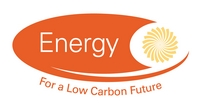Search for or browse energy-related data catalogued by the EDC. Some of the data is held and accessed through the EDC and some is held elsewhere. Most of the data is openly accessible but it is necessary to register with the EDC in order to access some datasets, this is shown on their full information page
115
Data records managed and curated by the EDC
90
Individual data records managed and held elsewhere
128
Data collections managed and held elsewhere



